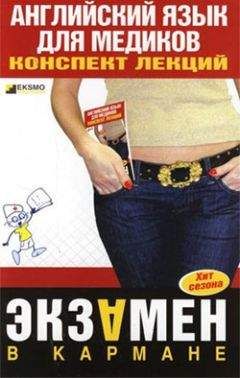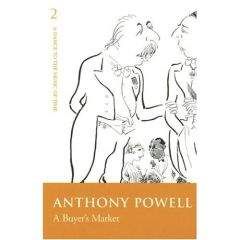inferior – низший
innervation – иннервация
Образование множественного числа существительных:
a cat – cats
a dog – dogs
а саr – cars
a watch – watches
a dress – dresses
a dish – dishes
a box – boxes
a potato – potetos
Запомните форму множественного числа следующих существительных:
a goose – geese
a tooth – teeth
a foot – feet
an ox – oxen
a man – men
a woman – women
a child – children
a mouse – mice
А также:
an englishman – englishmen
a frenchman – frenchmen
a german – germans
Существуют существительные, имеющие во множественном числе ту же форму, что и в единственном:
a sheep – sheep
a deer – deer
a swine – swine
Поставьте следующие существительные во множественное число.
A park, a play, a table, a plate, a fox, a room, a lady, a knife, a hair, a bus, a match, a way, a house, a family, a flag, a town, a wolf, a country, a lion, a star, a mountain, a tree, a shilling, a king, the waiter, the queen, a man, the man, a woman, the woman, an eye, a shelf, a box, the city, a boy, a goose, the watch, a mouse, a dress, a toy, the sheet, a tooth, a child, the ox, a deer, the life, a tomato.
This tea-cup, this egg, that wall, that picture, this foot, that mountain, this lady, that window, this man, that match, this knife.
Answer the questions.
1. What do the primary bronchi give?
2. For how many main branches in the right lung give primary bronchi rise?
3. For how many main branches in the left lung give primary bronchi rise?
4. What for lobar bronchi divide repeatedly?
5. What does mucosa consist of?
6. What is submucosa consist of?
7. What lung has a deep cardiac impression?
8. Where is the diaphragmatic surface (base) related?
9. How many pulmonary veins are there?
10. How are anterior and posterior pulmonary plexuses formed by?
Make the sentences of your own using the new words (10 sentences).
Find the definite and indefinite articles in the text.
ЛЕКЦИЯ № 23. Respiratory system
The respiratory system is structurally and functionally adapt ed for the efficient transfer of gases between the ambient air and the bloodstream as well as between the bloodstream and the tissues. The major functional components of the res piratory system are: the airways, alveoli, and blood vessels of the lungs; the tissues of the chest wall and diaphragm; the systemic blood vessels; red blood cells and plasma; and respi ratory control neurons in the brainstem and their sensory and motor connections. LUNG FUNCTION: provision of O2 for tissue metabolism occurs via four mechanisms. Ventilation – the transport of air from the environment to the gas exchange surface in the alveoli. O2 diffusion from the alveolar air space across the alveolar-capillary membranes to the blood.
Transport of O2 by the blood to the tissues: O2 diffusion from the blood to the tissues.
Removal of CO2 produced by tissue metabolism occurs via four mechanisms. CO2 diffusion from the tissues to the blood.
Transport by the blood to the pulmonary capillary-alveolar membrane.
CO2 diffusion across the capillary-alveolar membrane to the air spaces of the alveoli. Ventilation – the transport of alveolar gas to the air. Functional components: Conducting airways (conducting zone; anatomical dead space).
These airways are concerned only with the transport of gas, not with gas exchange with the blood.
They are thick-walled, branching, cylindrical structures with ciliated epithelial cells, goblet cells, smooth muscle cells. Clara cells, mucous glands, and (sometimes) cartilage.
Alveoli and alveolar septa (respiratory zone; lung parenchyma).
These are the sites of gas exchange.
Cell types include: Type I and II epithelial cells, alveolar macrophages.
The blood-gas barrier (pulmonary capillary-alveolar membrane) is ideal for gas exchange because it is very thin (‹0,5 mm) and has a very large surface area (50-100 m2). It consists of alveolar epithelium, basement membrane interstitium, and capillary endothelium.
New words
respiratory – дыхательный
structurally – структурно
functionally – функционально
adapted – приспособленный
efficient – эффективный
transfer – перемещение
gases – газы
ambient – окружающий
air – воздух
bloodstream – кровоток
airways – воздушные пути
alveoli – альвеолы
blood vessels – кровеносные сосуды
lungs – легкие
chest – грудь
diaphragm – диафрагма
the systemic blood vessels – системные кровеносные сосуды
red blood cells – красные кровяные клетки plasma – плазма
respi ratory control neurons – дыхательные нейроны контроля
brainstem – ствол мозга
sensory – сенсорный
motor connections – моторные связи
ventilation – вентиляция
transport – транспортировка
environment exchange – окружающая среда
surface – поверхность
Запомните!
Един. ч. – множ. ч.
this is – these are
that is – those are
there is – there are
it is – they are
Поставьте слова в следующих предложениях во множественное число.
1. This is a star.
2. This is a boy.
3. This is a baby.
4. That is a plate.
5. That is a flower.
6. That is a bookshelf.
7. Is this a sofa?
8. Is this a bookcase?
9. Is this a man?
10. Is that a ball?
11. Is that a train?
12. Is that a plane?
13. Is the window open?
14. Is the door closed?
15. Is the boy near the window?
16. That is not a king.
17. That is not a queen.
18. That is not a bus.
19. That isn't a mountain.
20. That isn't a goose.
21. This isn't a mouse.
22. It is a sheep.
23. It is a cigarette.
24. It is a cat.
25. It is not a girl.
26. It isn't a bag.
27. It isn't a tree.
28. It is not a bad egg.
29. It is a good egg.
30. Is that a flower?
31. This man is an engineer.
32. That woman is my sister.
33. This child is my son.
34. That goose is big.
35. This mouse is white.
36. This man is a doctor.
37. That woman is my cousin. She is a teacher
38. That girl is my niece. She is a pupil.
39. This girl has a blue sweater.
40. This boy has a good coat.
41. My uncle has a large flat.
42. There is a table in the room.
43. I have a good pen. My pen is in my pocket.
44. There is a flower in the vase.
45. This child's foot is sore.
Answer he questions.
1. What is the respiratory system structurally adopted?
2. What does the respiratory system transfer?
3. What are the most major lung functions?
4. What do we breath in?
5. What do we breath out?
6. How is the oxygen delivered to the organs?
7. How is oxygen delivered to the organs?
8. What is metabolism?
9. What are the functional components?
10. What do cell types include?
Make the sentences of your own using the new words (10 sentences).
Find plural and single in the text.
Find one word, which is a little bit different in meaning from others (найдите одно слово, которое немного отличается от других по смыслу):
1. a) palm; b) blood; c) vessel;
2. a) leg; b) tissue; c) metabolism;
3. a) airways; b) alveoli; c) arm;
4. a) intestines; b) cell; c) membrane;
5. a) oxygen; b) breath; c) carbon.
ЛЕКЦИЯ № 24. Lung volumes and capacities
Lung volumes – there are four lung volumes, which when added together, equal the maximal volume of the lungs. Tidal volume is the volume of one inspired or expected normal breath (average human = = 0,5 L per breath). Inspiratory reserve volume is the volume of air that can be inspired in excess of the tidal volume. Expiratory reserve volume is the extra an that can be expired after a normal tidal expiration.
Residual volume is the volume of gas that re lungs after maximal expiration (average human = 1,2 L).
Lung capacities are comprised of two or more of the lung volumes. Total lung capacity is the volume of gas that can be con tained within the maximally inflated lungs (average human = 6 L).
Vital capacity is the maximal volume that can be expelled after maximal inspiration (average human = 4,8 L).
Functional residual capacity is the volume remaining in the lungs at the end of a normal tidal expiration (average luman = 2,2 L).
Inspiratory capacity is the volume that can be taken into the lungs after maximal inspiration following expiration of a normal breath. Residual volume can not be directly measured by spirometry. Because FRC and TLC include the residual capacity, they can not be directly measured by spirometry either. Helium dilution techniques are used to determine these capacities. A forced vital capacity is obtained when a subject inspires maximally and then exhales as forcefully and as completely as possible. The forced expiratory volume (FEV1) is the volume of air exhaled in the first second. Typically, the FEV1 is approximate 80% of the FVC. In obstructive lung diseases, such as bronchial asthma, the FEV1 is reduced much more that the FVC, producing a to FEV1 / FVC. In restrictive lung diseases, such as pulmonary fibro-sis, both the FEV1, and the FVC are reduced. This characteristically produces a normal or increased FEV1/ FVC.
GAS LAWS AS APPLIED TO RESPIRATORY PHYSIOLOGY: Dalton's Law: In a gas mixture, the pressure exerted by each gas is independent of the pressure exerted by the other gases.
A consequence of this is as follows: partial pressure = total pressure x fractional concentration. This equation can be used to determine the partial pressure of oxygen in the atmosphere. Assuming that the total pressure (or barometric pressure, PB) is atmospheric pressure at sea level (760 mmHg) and the fractional concentration of O2 is 21%, or 0,21: P02 = 760 mmHg ч 0,21 = 160 mmHg. As air moves into the airways, the partial pressures of the vari ous gases in atmospheric air are reduced because of the addi tion of water vapor (47 mmHg). Henry's Law states that the concentration of a gas dissolved in liquid is proportional to its partial pressure and its solubility coef ficient (Ks). Thus, for gas X, [X] = Ks ч Px
Fick's Law states that the volume of gas that diffuses across a barrier per unit time is given by:
Vgas = YxDx(P1 – P2)
where A and T are the area and thickness of the barrier, P1 and P2 are the partial pressures of the gas on either side of the barrier and D is the diffusion constant of the gas. D is directly proportional to the solubility of the gas and inversely proportional to the square root of its molecular weight.
New words
lung – легкое
volume – объем
equal – равный
the maximal – максимальный
tidal – вдыхаемый и выдыхаемый
inspired – вдохновленный
expected – ожидаемый
normal – нормальный
breath – дыхание
average – среднее число
human – человек
reserve – зарезервировать
residual – oстаточный
helium – гелий
dilution – растворение
techniques – методы
to be used to – использовать
to determine – определять
capacities – возможности
Поставьте слова в следующих предложениях во множественное число.
1. This room is very large.
2. There is a match in the box.
3. Has this lady a knife?
4. There is a man and a woman in the street.
5. This lady is that gen tleman's wife.
6. This shoe is too large for my foot.
7. The child is sitting on a bench.
8. My tooth is white.
9. This key is made of steel.
10. A potato is a vegetable and a cherry is a fruit.
11. This is my friend's study.
12. What is that child's name?
13. The cat has caught a mouse.
14. There was a lady, a gentleman, a boy and a girl in the room.
15. In the farm-yard we could see an ox, a sheep, a cow and a goose.
16. Is worker an Englishman or a German?
17. He is a Frenchman.
18. Why don't you eat this potato?
19. This strawberry is still green.
20. The withered leaf has fallen to the ground.
21. Can you see a bird in that tree?
22. Does your tooth still ache?
23. I held up my foot to the fire to warm it.
24. His child studies very well.
25. This man works at the office.
26. There is a new house in our street.
27. This story is very interesting.
28. I have hurt the foot.
29. The wolf has been shot.
30. He keeps his toy in a box.
31. Put this knife on that table.
32. I see a pupil.
Притяжательный падеж существительных / (Possessive case)
The child's toys – The children's toys
The boy's books – The boys' books
Перефразируйте следующие словосочетания и предложения, употребляя притяжательный падеж.
1. The room of my friend.
2. The questions of my daughter.
3. The wife of my brother.
4. The table of our teacher.
5. The poems of Shakespeare.
6. The voice of this girl.
7. The new club of the workers.
8. The letter of Pete.
9. The car of my parents.
10. The life of this woman.
Answer the questions.
1. How many lung volumes are there?
2. Are the lung volumes added together?
3. How can inspiratory reserve volume be inspired?
4. Can inspiratiry reserve volume be expired after a normal tidal expiration?
5. What is residual volume?
6. How are lungs capacities be composed?
7. Is vital capacity the maximal volume?





![Rick Page - Make Winning a Habit [с таблицами]](https://cdn.my-library.info/books/no-image-mybooks-club.jpg)